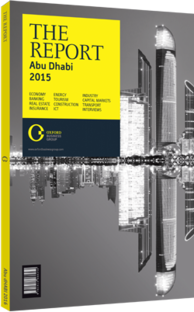Mohammad Helal Al Muhairi, Director-General, Abu Dhabi Chamber of Commerce and Industry (ADCCI): Interview

Interview: Mohammad Helal Al Muhairi
How can local content requirements and institutional frameworks be developed to support small and medium-sized enterprises (SMEs)?
MOHAMMAD HELAL AL MUHAIRI: The local content requirement has long been used by many countries, both advanced and developing, as a tool for promoting SMEs and protecting infant industries. The extent to which SMEs will benefit from this requirement depends on the types of goods and services covered by this rule, the ownership structure of SMEs, and the type and number of workers employed. The ultimate question is whether or not this requirement will be based on efficiency considerations. In other words, will it be the most efficient or competitive SME that will be contracted to supply locally procured goods or services? The answer to this question has to do with the institutional framework for supporting SMEs. The main thinking behind supporting SMEs is that entrepreneurs usually face high discovery costs, which must be paid for by the authorities if they are to enable such firms to overcome information-related market failures. It can be very costly for SMEs to do research on new markets, such as new products and production technologies, and the government could reduce these discovery costs through an appropriate institutional framework, which the ADCCI is currently working on.
To what extent do the emirate’s current public-private partnerships (PPPs) give confidence that the structure provides efficiency and added value and increases the role of the private sector?
AL MUHAIRI: In the aftermath of the global financial crisis, for most other countries – especially in the US and Europe – the purpose of PPPs is to tap into the financial resources of the private sector in light of budget cuts. In other words, governments need the financial resources of the private sector. However, in Abu Dhabi the public sector is fortunately endowed with sufficient financial resources and can be a very supportive partner. This structure reinforces the confidence of the private sector and has enabled it to take more risks. Having said that, PPPs must also be careful not to fall into the moral hazard trap by believing they will simply be bailed out if things go wrong. This is sometimes the classic argument for supporting inefficient PPPs that do not add much value other than creating temporary, low-skilled jobs. For this reason, the process of monitoring and evaluating PPPs is a key condition for their success, and Abu Dhabi has been at the forefront of regularly monitoring the performance of PPPs.
How are short-term stabilisation policies and long-term diversification strategies being developed to avoid triggering a process of de-industrialisation?
AL MUHAIRI: The process of de-industrialisation is a phenomenon in which a country loses its competitiveness in industry, especially in manufacturing, because resources, including both labour and capital, start moving from the tradable manufacturing sector to service sectors. When countries experience large exogenous capital inflows, as is the case with Abu Dhabi’s oil export revenues, the economy-wide wage rate begins to increase. Domestic producers must increase their prices in order to maintain profits. They cannot do so in the tradable manufacturing sector because prices in this sector are set by international markets. However, they can increase their prices in non-tradable sectors, such as real estate, and therefore profitability in these domestic service sectors will be higher than in the manufacturing sector, and labour and capital will start moving towards these service sectors, triggering a process of de-industrialisation. It is crucial for Abu Dhabi to avoid this given that the long-term strategy is to diversify into manufacturing industries, such as pharmaceuticals, petrochemicals, aviation equipment, micro-chips and other high-end goods. In order to accomplish this, Abu Dhabi is currently relying on short-term expansionary fiscal and monetary policies to stop the flow of capital and labour out of manufacturing, as well as adopting long-term strategic trade and industrial policies to actively promote the tradable manufacturing sector.
You have reached the limit of premium articles you can view for free.
Choose from the options below to purchase print or digital editions of our Reports. You can also purchase a website subscription giving you unlimited access to all of our Reports online for 12 months.
If you have already purchased this Report or have a website subscription, please login to continue.

